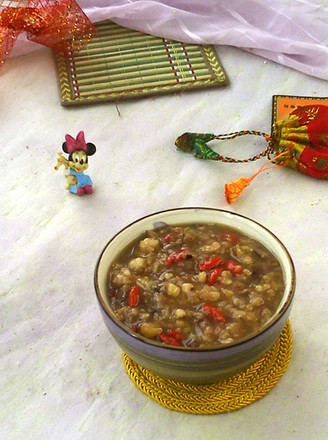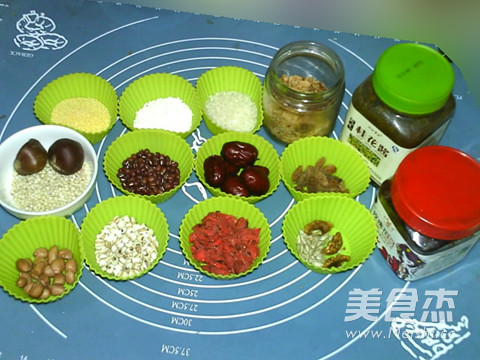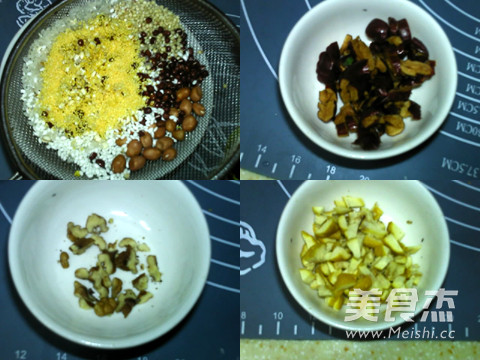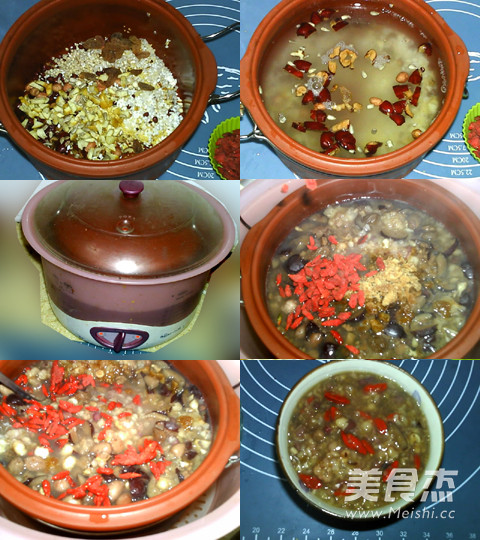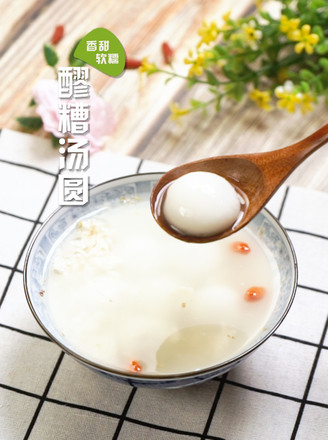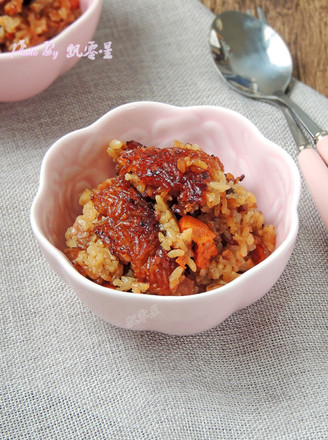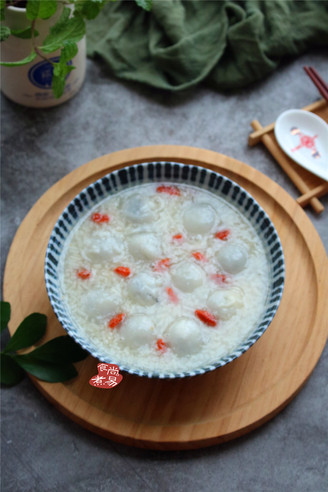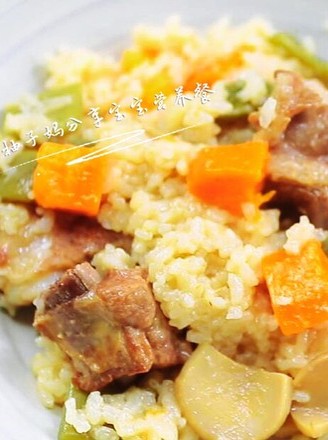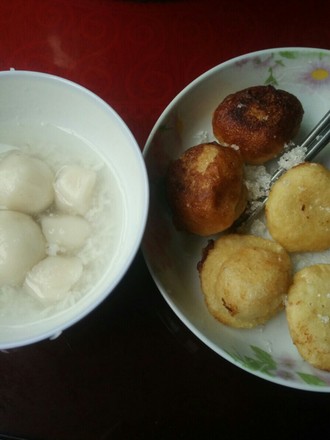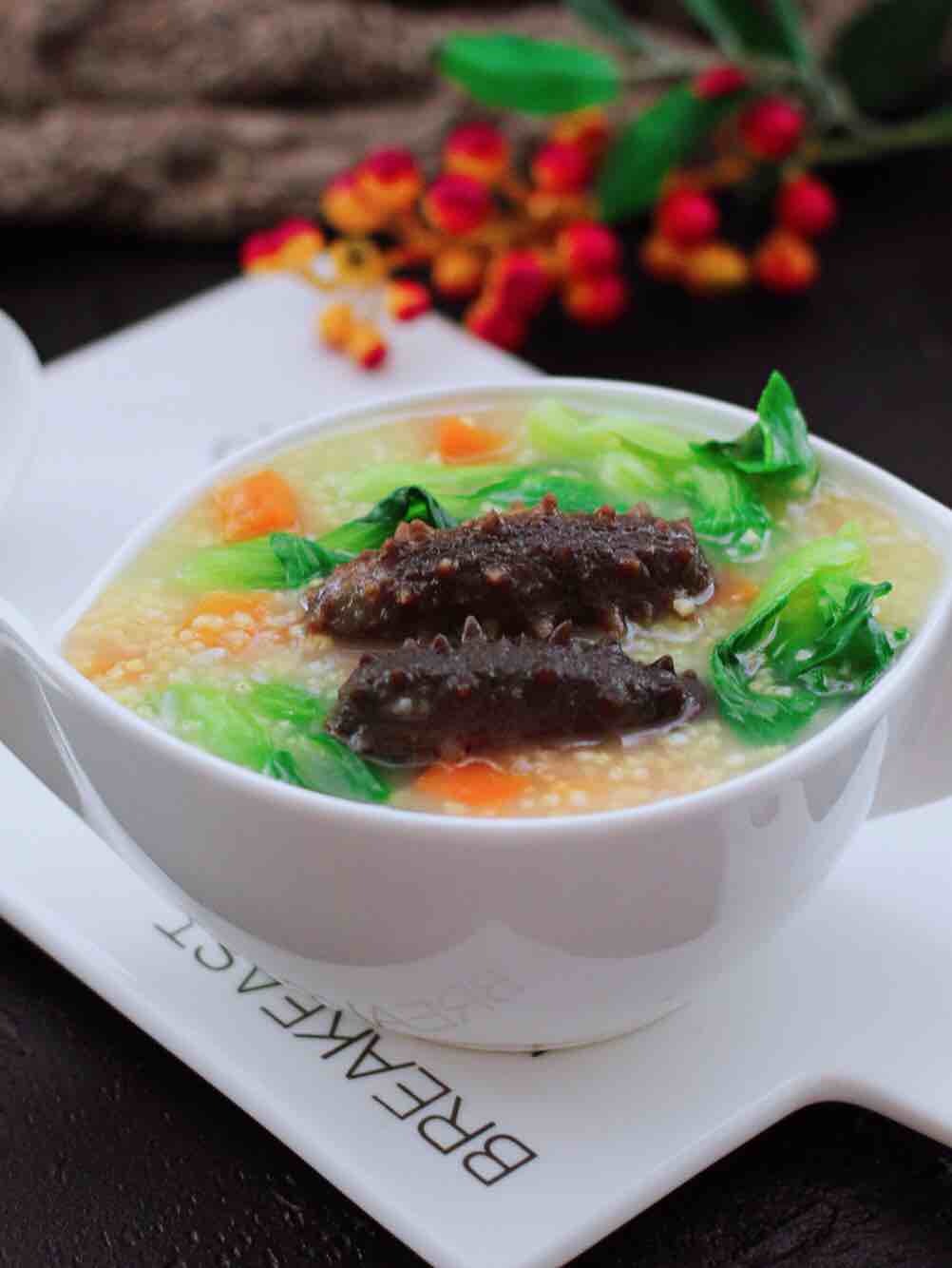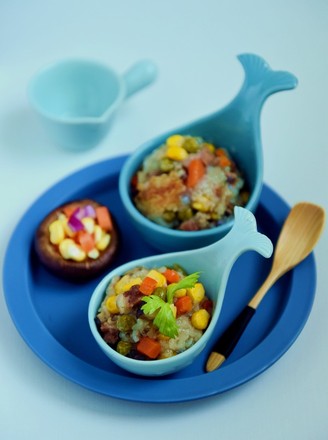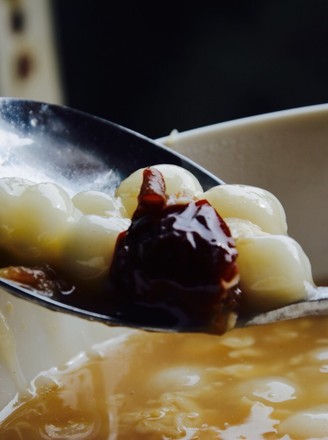Laba Congee
by Food·Color
Favorite
Difficulty
Easy
Time
2h
Serving
4
Laba porridge is also called "five-flavor porridge", "seven-treasure porridge" and "eight-treasure porridge". According to legend, this porridge is related to Buddha Shakyamuni, so it is also called "Buddha porridge".
It is said that Shakyamuni visited all the mountains and rivers in India, hunger and thirst, and fainted on the ground. Fortunately, the shepherdess boiled and fed them with wild fruits and grains, and got refreshed. She meditated under the Bodhi tree and finally became a Buddha on December 8. His disciples set this day as the Enlightenment Festival and commemorated it by making porridge imitating the shepherdess, called "Laba Porridge".
The custom of drinking Laba porridge in China only began after the Eastern Han Dynasty and after Buddhism was introduced into China. In the Qing Dynasty, the preparation of Laba porridge in the Lama Temple became a grand ceremony, and the scene was extremely spectacular.
The pot for porridge in Lama Temple has a diameter of 2 meters and a depth of 1.5 meters, which can hold 20-30 dans of rice (60 kg per dan). Laba porridge is made by more than 10 strong chefs who have been specially trained. On the morning of the seventh day of the seventh lunar month, the fire was ordered and the ingredients were cut according to the number. The third and third floors next to the porridge pot were full of people. The three innermost floors are porridge cooks, lamas chanting sutras, and monks holding sutras. Yu is the eunuch who delivers porridge. The porridge is completely burnt with wood, and a total of 6 pots are boiled. The first pot is sent to the temples and temples of Taimiao, Shouhuang Temple, Qing Palace, and Xiyuan Temple for worshiping ancestors, gods and Buddhas. The second pot was sent to the emperor and queen, and bestowed on the concubine, the prince, and the grandchildren. The third pot is for princes and monks in Kyoto. The fourth pot is for the civil and military officials and local ministers in Beijing. The fifth pot is for the lamas and monks who hold the scriptures in Lama Temple. The sixth pot was distributed to the people.
The emperor was very religious in eating porridge. The porridge was offered in front of the Buddha with his own hands, and he bowed down with incense, and then took it back for consumption after the incense was exhausted. It is said that if you eat the porridge used by gods and Buddhas, you will be blessed by gods and Buddhas, and you will be safe in all seasons. Emperor Daoguang wrote a poem "Laba Congee": "In the early summer of a yang, Gu Su is congee and bean-cooked. The Buddha's heart is offered at the festival, and the golden light is present in the heart. Gathered one after another. They tasted the wonderful products and the wonderful colors of the lotus torch. The children were full of stomachs to celebrate the peace, and they also played wax drums on the street." But. . . Isn't the porridge cold at this time?
The congee that the Buddha ate back then could not be refined. There are many Laba porridge recipes, and this recipe is very homely. Even so, water chestnut and green red silk could not be found at home, presumably this porridge came from Jiangnan? Fortunately, Laba porridge has a lot of ingredients, so you don't have to stick to it. The water chestnut is replaced with barley; the green and red silk is made of wolfberry. The function of the two is nothing more than adding color and increasing the appreciation of the porridge. He hesitated to reduce the amount of brown sugar, and then rejoiced, but fortunately, the white sugar was omitted. If the original amount was sufficient, the sweetness would not be what I wanted to endure. Let's make the original porridge in the future.
It is said that Shakyamuni visited all the mountains and rivers in India, hunger and thirst, and fainted on the ground. Fortunately, the shepherdess boiled and fed them with wild fruits and grains, and got refreshed. She meditated under the Bodhi tree and finally became a Buddha on December 8. His disciples set this day as the Enlightenment Festival and commemorated it by making porridge imitating the shepherdess, called "Laba Porridge".
The custom of drinking Laba porridge in China only began after the Eastern Han Dynasty and after Buddhism was introduced into China. In the Qing Dynasty, the preparation of Laba porridge in the Lama Temple became a grand ceremony, and the scene was extremely spectacular.
The pot for porridge in Lama Temple has a diameter of 2 meters and a depth of 1.5 meters, which can hold 20-30 dans of rice (60 kg per dan). Laba porridge is made by more than 10 strong chefs who have been specially trained. On the morning of the seventh day of the seventh lunar month, the fire was ordered and the ingredients were cut according to the number. The third and third floors next to the porridge pot were full of people. The three innermost floors are porridge cooks, lamas chanting sutras, and monks holding sutras. Yu is the eunuch who delivers porridge. The porridge is completely burnt with wood, and a total of 6 pots are boiled. The first pot is sent to the temples and temples of Taimiao, Shouhuang Temple, Qing Palace, and Xiyuan Temple for worshiping ancestors, gods and Buddhas. The second pot was sent to the emperor and queen, and bestowed on the concubine, the prince, and the grandchildren. The third pot is for princes and monks in Kyoto. The fourth pot is for the civil and military officials and local ministers in Beijing. The fifth pot is for the lamas and monks who hold the scriptures in Lama Temple. The sixth pot was distributed to the people.
The emperor was very religious in eating porridge. The porridge was offered in front of the Buddha with his own hands, and he bowed down with incense, and then took it back for consumption after the incense was exhausted. It is said that if you eat the porridge used by gods and Buddhas, you will be blessed by gods and Buddhas, and you will be safe in all seasons. Emperor Daoguang wrote a poem "Laba Congee": "In the early summer of a yang, Gu Su is congee and bean-cooked. The Buddha's heart is offered at the festival, and the golden light is present in the heart. Gathered one after another. They tasted the wonderful products and the wonderful colors of the lotus torch. The children were full of stomachs to celebrate the peace, and they also played wax drums on the street." But. . . Isn't the porridge cold at this time?
The congee that the Buddha ate back then could not be refined. There are many Laba porridge recipes, and this recipe is very homely. Even so, water chestnut and green red silk could not be found at home, presumably this porridge came from Jiangnan? Fortunately, Laba porridge has a lot of ingredients, so you don't have to stick to it. The water chestnut is replaced with barley; the green and red silk is made of wolfberry. The function of the two is nothing more than adding color and increasing the appreciation of the porridge. He hesitated to reduce the amount of brown sugar, and then rejoiced, but fortunately, the white sugar was omitted. If the original amount was sufficient, the sweetness would not be what I wanted to endure. Let's make the original porridge in the future.

